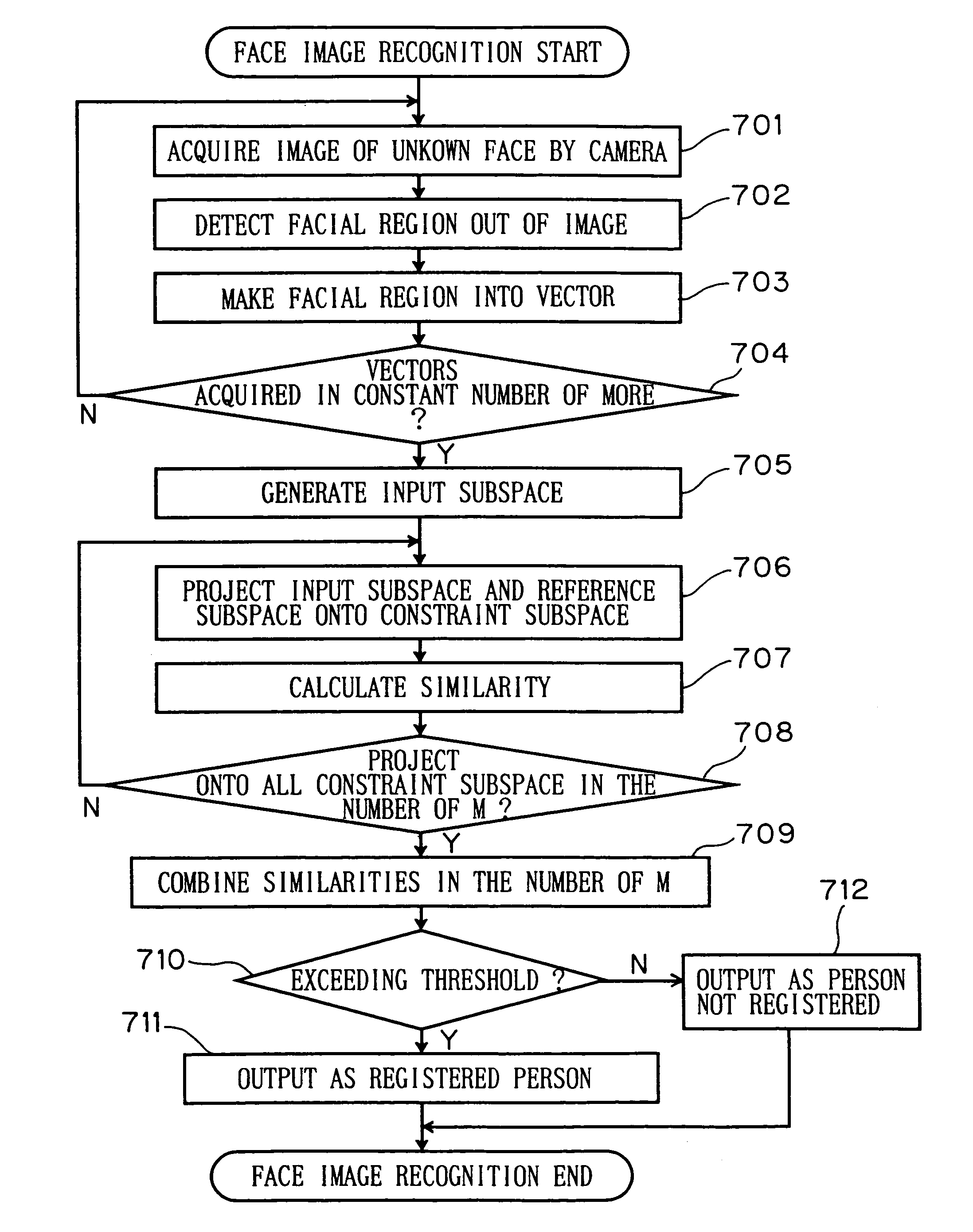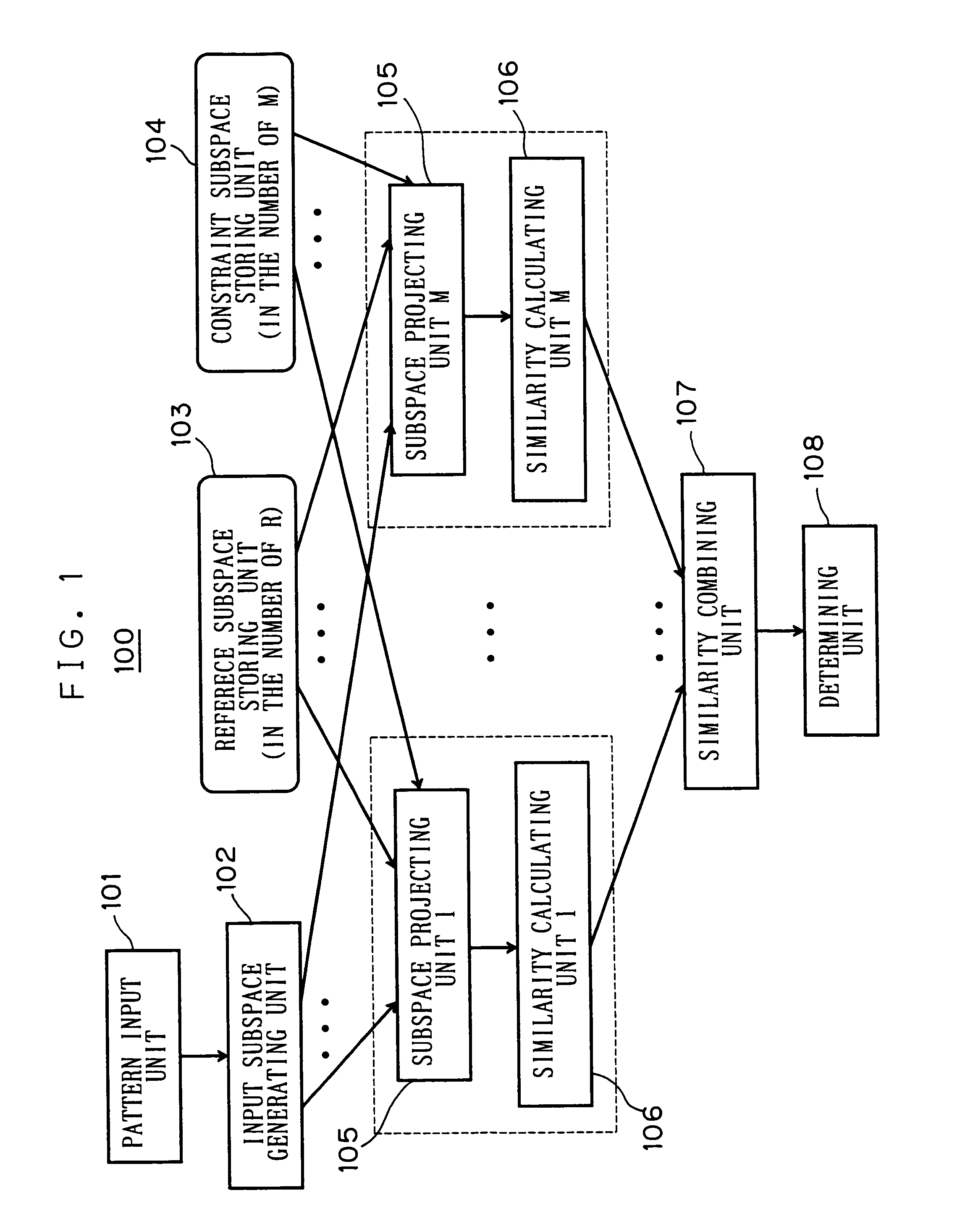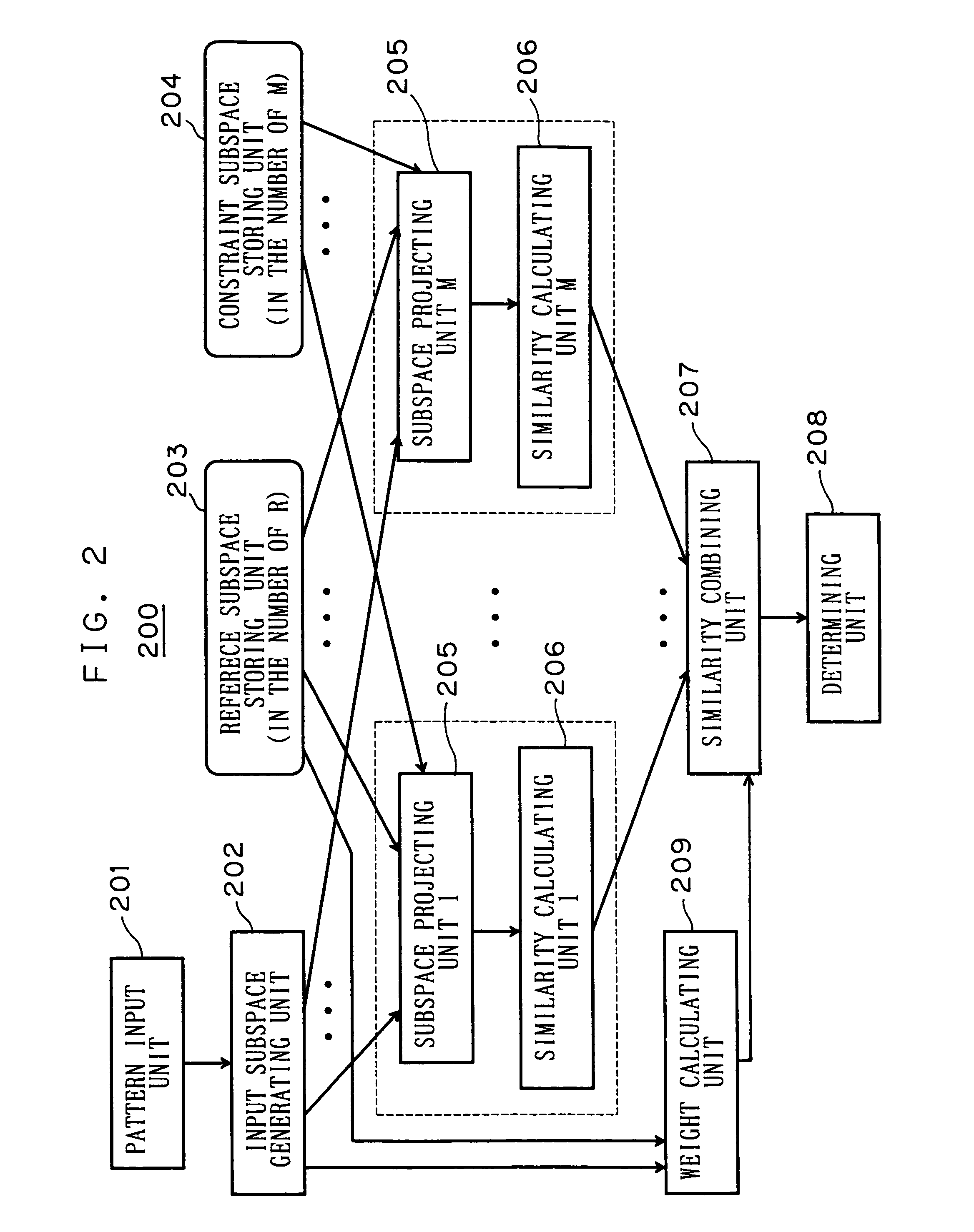Apparatus and method of pattern recognition
a pattern recognition and apparatus technology, applied in image analysis, instruments, computing, etc., can solve the problems of unstable recognition performance, prone to higher false rejection rate than other people, etc., and achieve the effect of reducing the false rejection rate and reducing the influence of the above problem
- Summary
- Abstract
- Description
- Claims
- Application Information
AI Technical Summary
Benefits of technology
Problems solved by technology
Method used
Image
Examples
first embodiment
[0030]In method of using a plurality of constraint subspaces, a similarity combining is needed. The similarity combining methods are divided into two, depending upon whether to combining those based on a fixed weight, or to combining those based on a dynamic weight. At first, the former method of recognition is described as a first embodiment.
[0031]The present embodiment is shown as a pattern recognition apparatus 100 in FIG. 1. The pattern recognition apparatus 100 comprises a pattern input unit 101, an input subspace generating unit 102, a reference subspace storing unit 103, a constraint subspace storing unit 104, a subspace projecting unit 105, a similarity calculating unit 106, a similarity combining unit 107, and a determining unit 108. Incidentally, the subspace projecting unit 105-1, . . . , 105-M and the similarity calculating unit 106-1, . . . , 106-M each exist in the number of M of the constraint subspaces stored in the constraint subspace storing unit 104. Meanwhile, th...
second embodiment
[0051]Now a second embodiment is explained on the basis of FIG. 2.
[0052]The first embodiment was on the former of the foregoing similarity combining methods. Now explained is, as a second embodiment, the latter method that combines similarities through a dynamic weight relying upon the input / reference subspaces.
[0053]This embodiment is shown as a pattern recognition apparatus 200 in FIG. 2.
[0054]The pattern recognition apparatus 200 comprises various units 201-208 functioning similarly to the units 101-108 of the first embodiment, and a weight calculating unit 209. Incidentally, the subspace projecting unit 205 and the similarity calculating unit 206 each exist in the number of M of the constraint subspaces stored in the constraint subspace storing unit 204 similarly to the first embodiment.
[0055]The weight calculating unit 209 selects an optimal constraint subspace for the input / reference subspace from a plurality of constraint subspaces, or makes a weighting with an adaptation of ...
third embodiment
[0060]Now a third embodiment is explained on the basis of FIG. 3.
[0061]The similarity calculating unit 106 of the first embodiment, although using the mutual subspace method, can be replaced with a similarity calculating unit using the subspace method. This case is described as a third embodiment.
[0062]The present embodiment is shown by a pattern recognition apparatus 300 in FIG. 3. The pattern recognition apparatus 300 comprises a pattern input unit 301, a reference subspace storing unit 302, a constraint subspace storing unit 303, projecting units 304, similarity calculating units 305, a similarity combining unit 306, and a determining unit 307. In the apparatus, number of the projecting units 304 and the number of the similarity calculating units 305 are identical with the number (“M”) of the constraint subspaces stored in the constraint subspace storing unit 303.
[0063](1) Pattern Input Unit 301
[0064]The pattern input unit 301 has the similar function to the pattern input unit 10...
PUM
 Login to View More
Login to View More Abstract
Description
Claims
Application Information
 Login to View More
Login to View More - R&D
- Intellectual Property
- Life Sciences
- Materials
- Tech Scout
- Unparalleled Data Quality
- Higher Quality Content
- 60% Fewer Hallucinations
Browse by: Latest US Patents, China's latest patents, Technical Efficacy Thesaurus, Application Domain, Technology Topic, Popular Technical Reports.
© 2025 PatSnap. All rights reserved.Legal|Privacy policy|Modern Slavery Act Transparency Statement|Sitemap|About US| Contact US: help@patsnap.com



